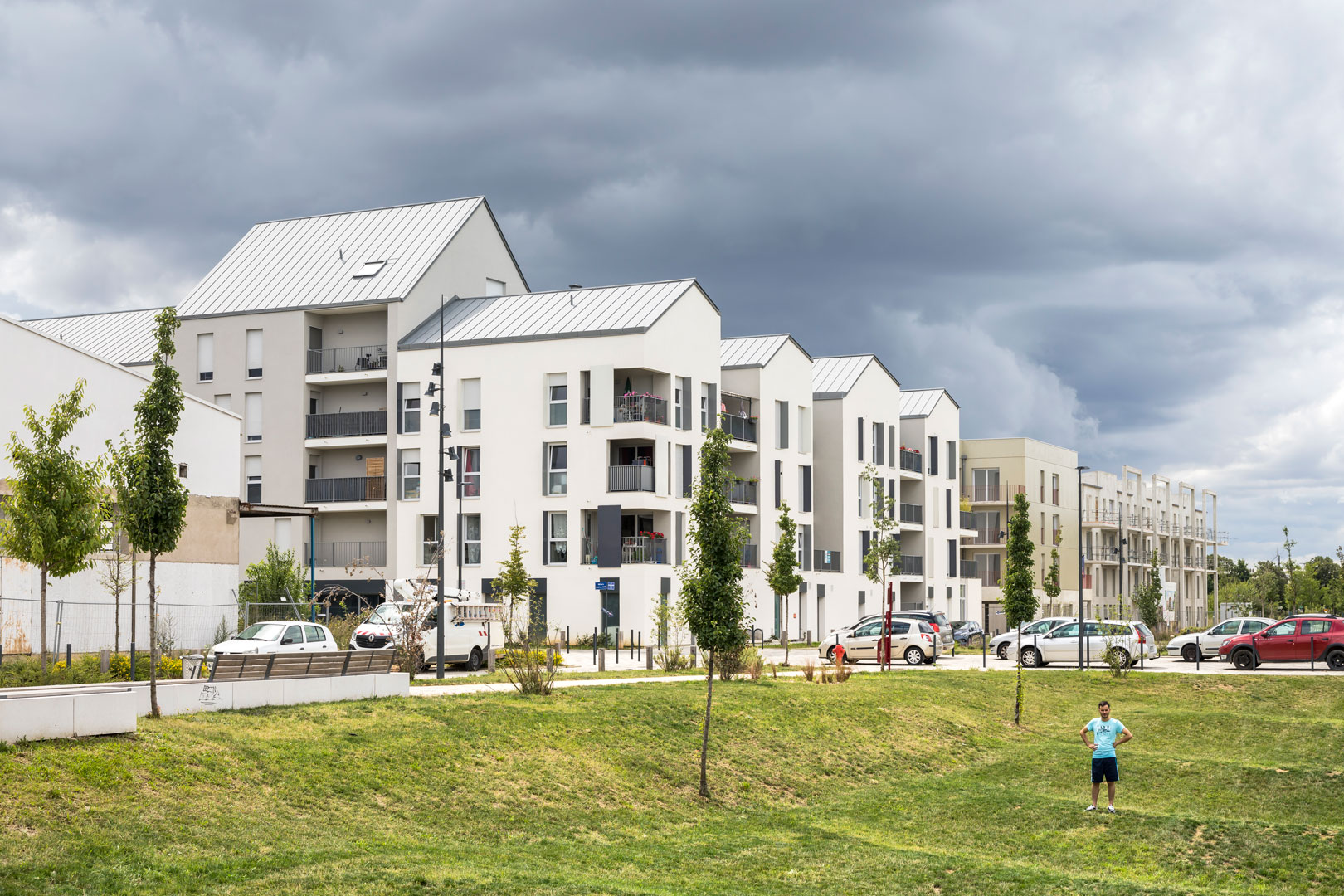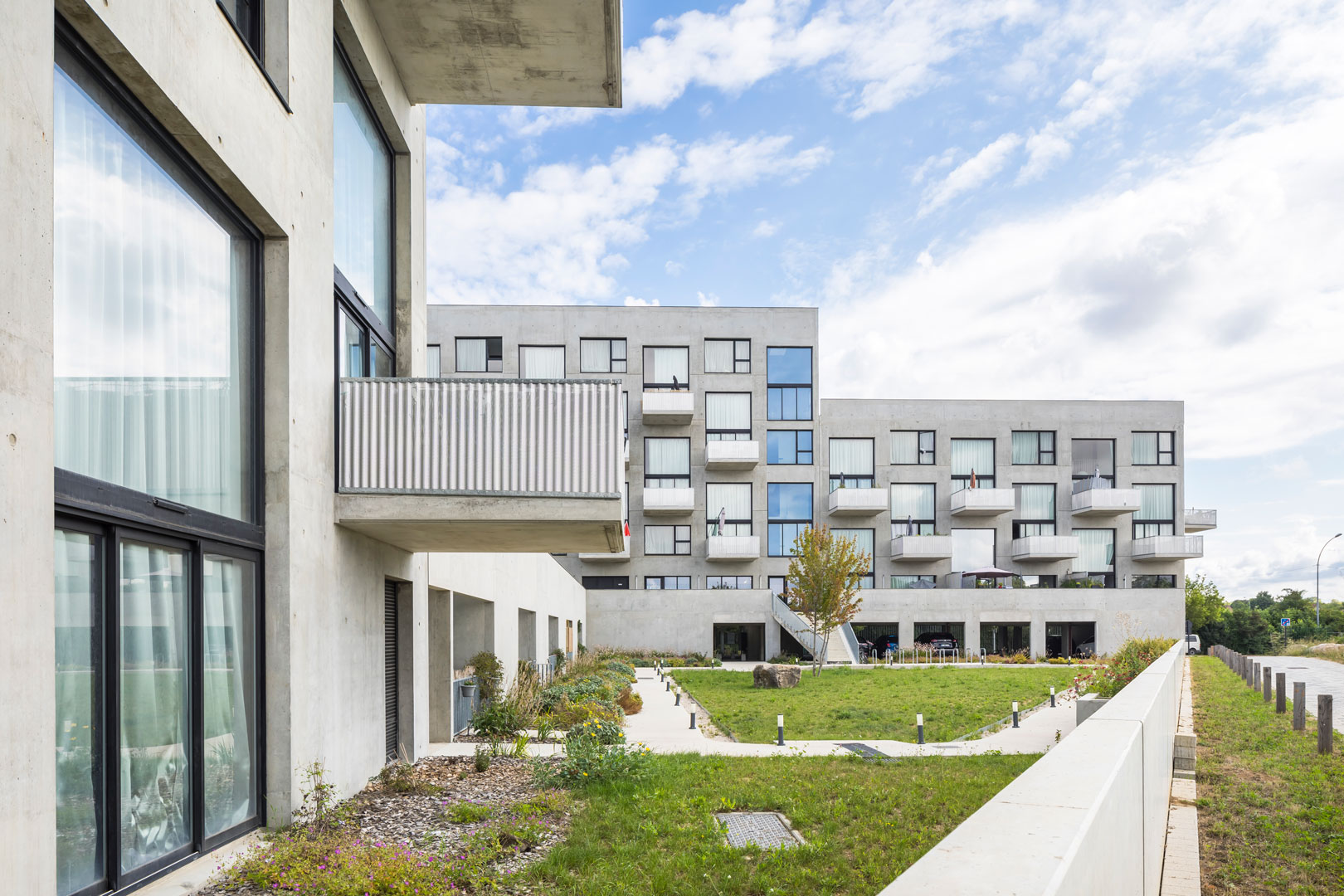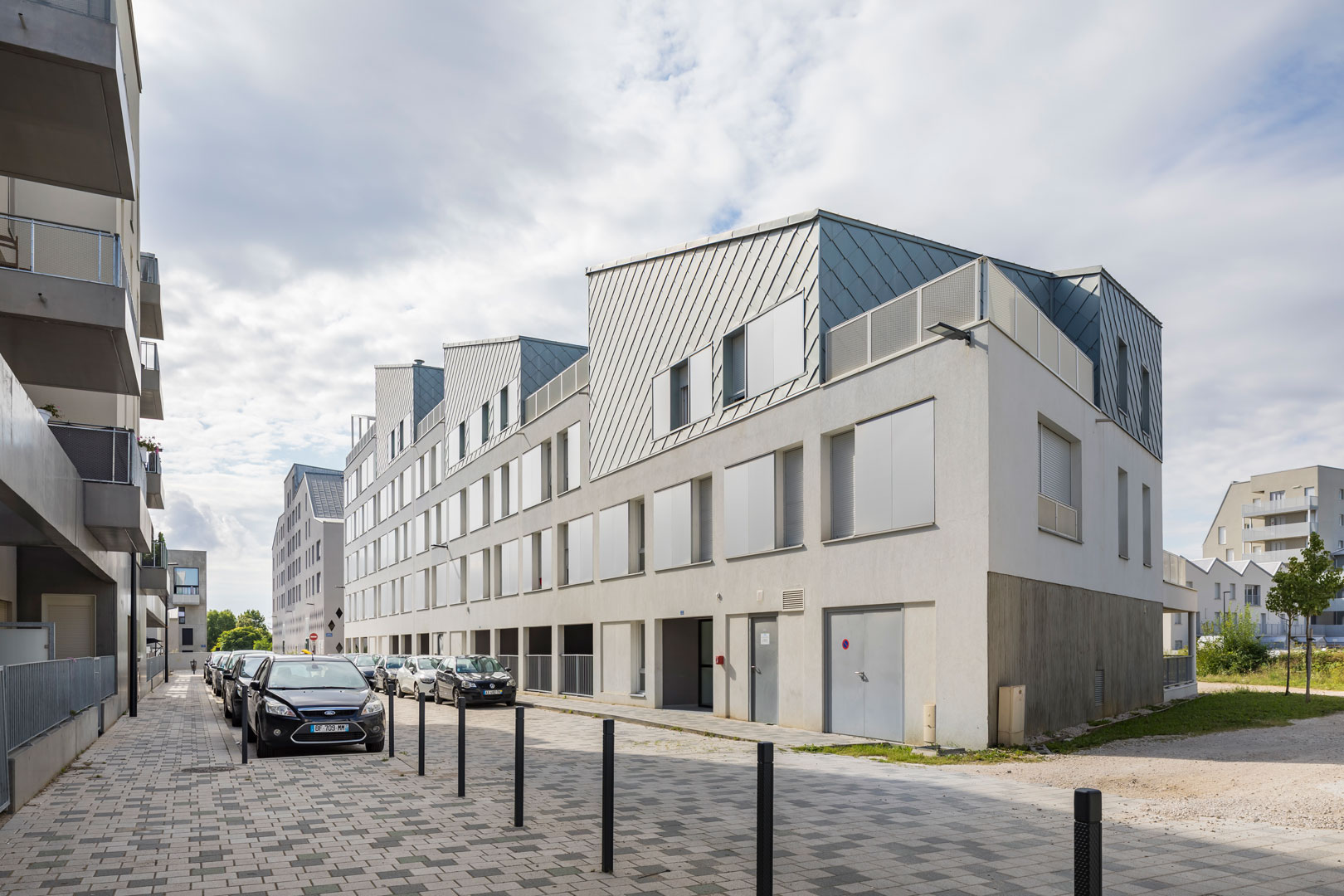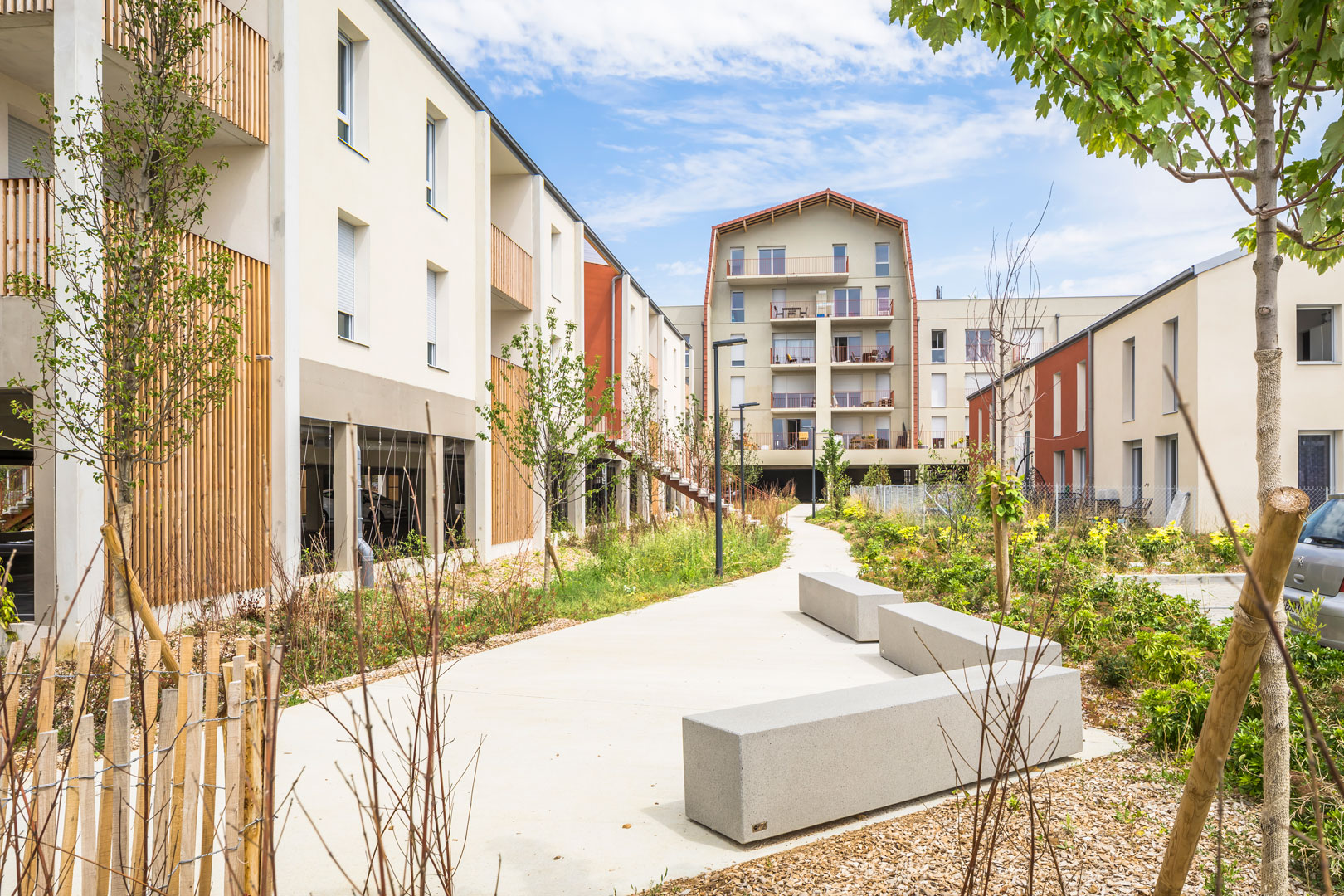
a contemporary garden city
The Grand-Est district aims to translate the urban and environmental ambition of the city of Dijon and Dijon Métropole. It is located at the south-eastern entrance to the city and includes the sites of the Mont-Blanc 1 and Mont-Blanc 2 projects, located around the A39 interchange and the N274 ring road, and the Ecocité Jardin des Maraîchers, located further west, on the site of the former slaughterhouses.
The Ecocité des Maraîchers, with an area of around 19 hectares, will be the first achievement in the Grand Est region. It is presented as a contemporary garden city, in keeping with its past as a market-gardening area.

a strong emphasis on landscape
For this new district, and in line with an approach dear to the agency, the landscape is not the final layer in greening the project, but the parameter that infuses the design from the outset.
Dijon’s urban morphologies are a direct result of the desire to preserve large planted areas and maximize open spaces. The central planted mall distributes all the neighborhood’s alleyways, like the backbone of the project, and extends into a large park to the south.
On the scale of the blocks, generous areas of open land have been preserved, enabling residents to enjoy local gardens. To preserve the soil, an alternative water management method was also implemented, bypassing all underground networks.

alleys promoting exchanges and links
The district remains accessible to cars, but the treatment of the tracks and their size limitates the impact of the automobile presence. The neighborhood mesh in soft modes is completed by alleys that crisscross between the blocks in a north-south direction. These spaces often occupied by residents become shared places, extensions of living spaces, opportunities for exchanges and social ties.
From an environmental point of view, most of the water will be infiltrated directly into the ground, channeled to the central park through landscaped valleys, or collected directly in these very valleys. Established along mixed routes and alleys, they enhance the stroll by their landscape quality.

high quality of use
The aim of the development project is to build the blocks in line with a bioclimatic design, in particular by connecting them to the Dijon Métropole heating network and reusing materials from the site’s former buildings for the construction of the roadways.
The homes, for their part, push the boundaries of high quality of use to the maximum: they are bi-oriented, through-planning and feature large private or shared outdoor extensions. This high quality of living is reflected in every type of building, systematically distributed throughout each block: collective, intermediate and individual housing.
Les Maraîchers district thus features a sharing of space, as opposed to a closed residence. Shared spaces, programmatic, social and generational diversity, and living spaces that promote a sense of community throughout the neighborhood, blocks and buildings.

PROJECT TEAM
PROJECT MANAGEMENT
ANMA Architect
Infrastructure: Infraservices
Lighting: ON
Displacement: Transitec
PRE-OPERATIONAL
Thomas Hermann
Claire Jeanson
OPERATIONAL
Nicolas Saugère
Mathilde Lecomte
TECHNICAL SHEET
STATUS Under construction
CONTRACTORSPLAAD, EPLAAD
DELIVERY 2023
SURFACE Site 16 ha – 117 000 m² SP
WORK VALUE12,9 M€ HT
PERSPECTIVIST1 Plan
PHOTOGRAPH Sergio Grazia
SEE +
Bordeaux, Bassins à Flot
Metz, Quartier de l’Amphithéâtre
Montpellier, Marianne République
